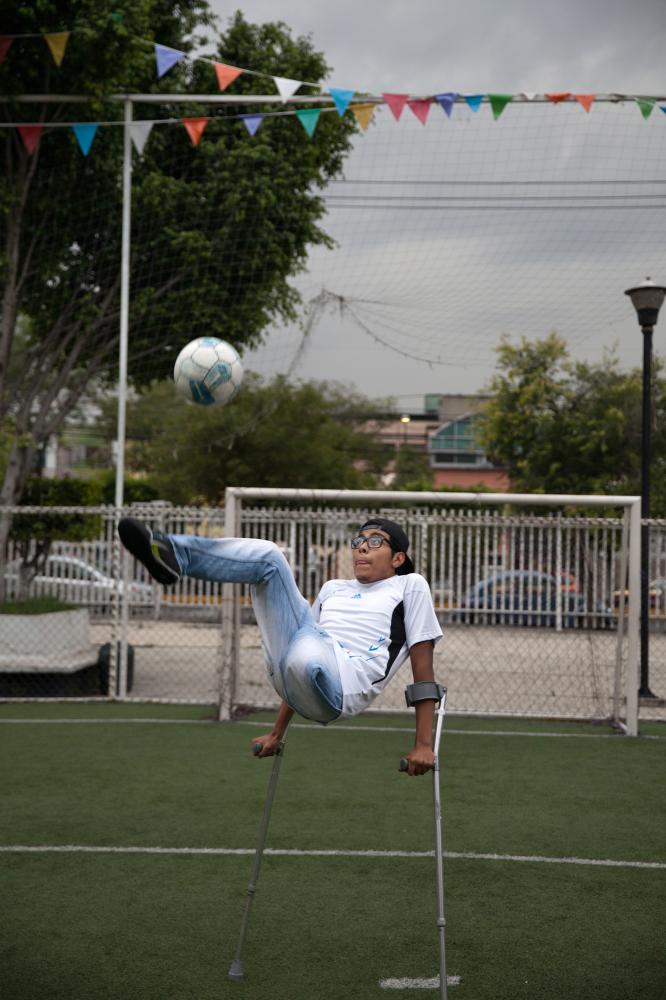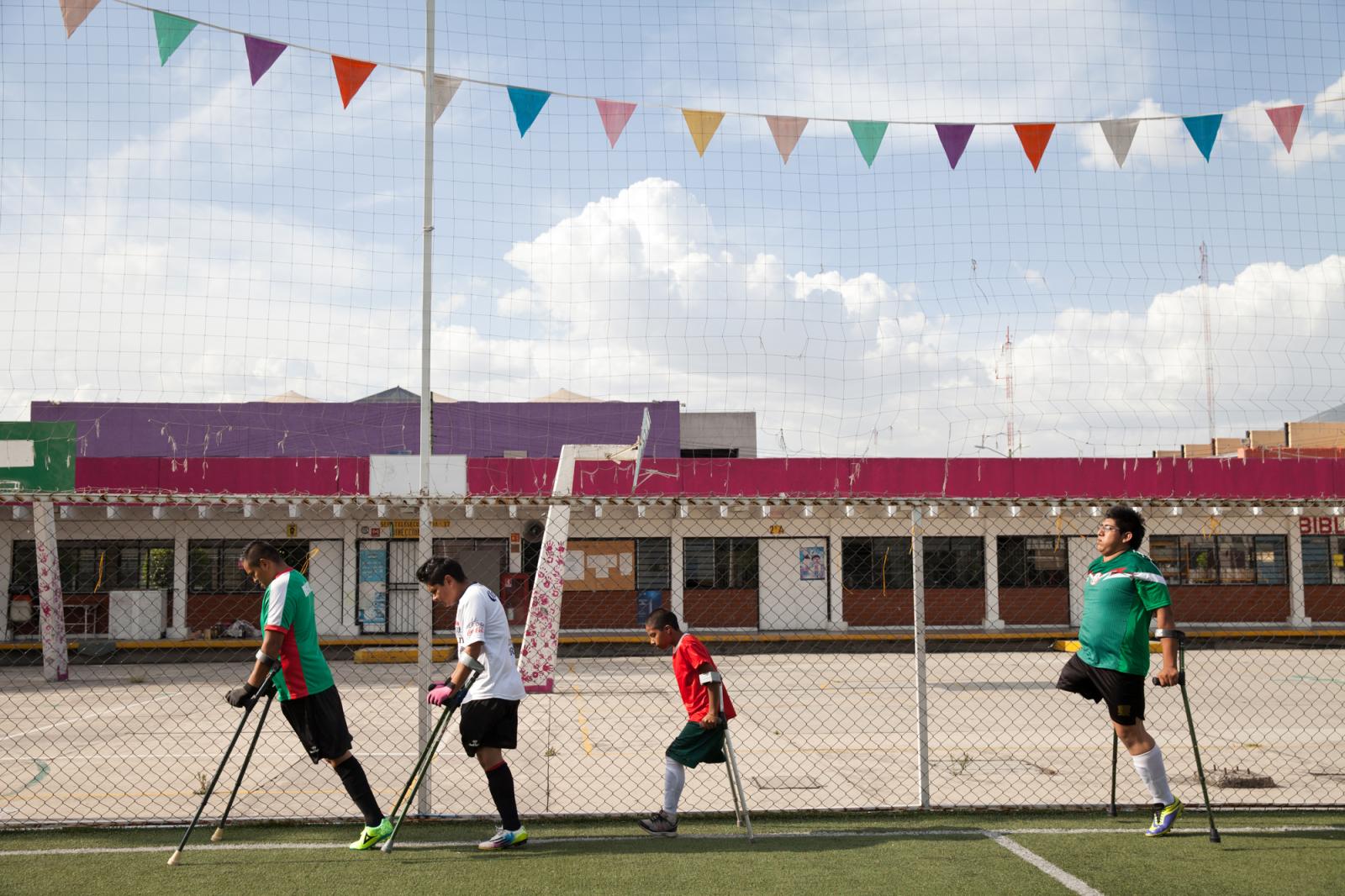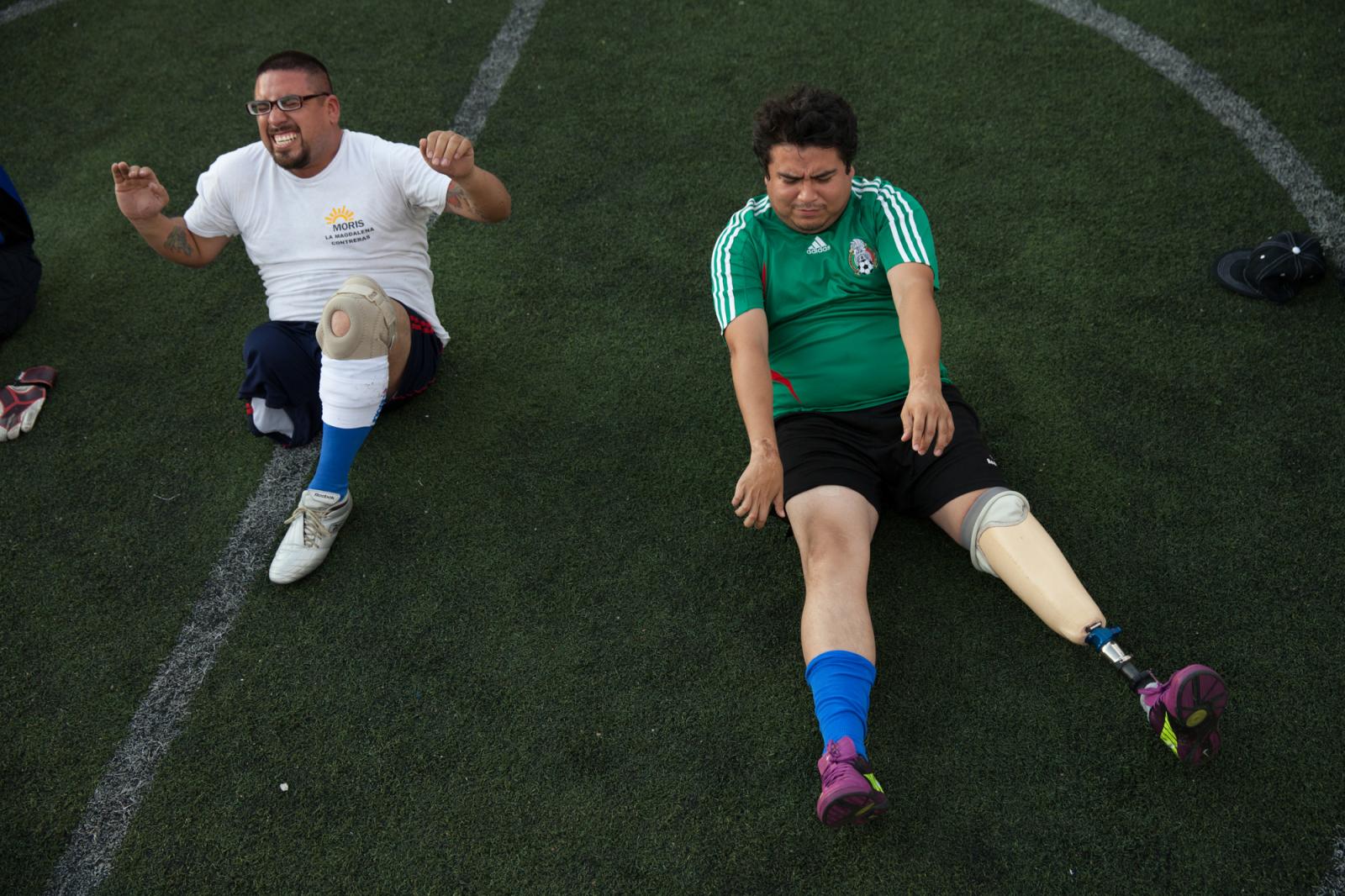KEEP MOVING
Meet Baruch, who, at eighteen, is one of Mexico's best young footballers. Two years ago, Baruch's left leg was amputated to halt the spread of a malignant tumor.
Baruch is the captain of Guerreros Aztecas, a volunteer-run team of amputee footballers whose ages, backgrounds and professions cover the full sweep of Mexican society.
From a government lawyer to a one-armed waiter at one of the city's best cantinas, from a 25-year-old high-school student to a 42-year-old ex-quarterback, their stories are no less varied. One of their midfielders lost a leg saving a girl from an onrushing train. Their goalie lost his arm in an industrial laundry.
Together, their experiences shed light on one of Mexico's most vulnerable populations: men of working age who are missing a limb. Rampant discrimination means that only 25% are in employment or study.
In a city where accidents and illness force 1,500 male amputees out of work every year, Guerreros Aztecas is as much about winning back dignity and masculine identity as it is about winning games.
And they are winning.
Founded one year ago by five players, they now have a squad of twenty-three. Seven of them have made the national team's shortlist to represent Mexico at this November's Amputee Soccer World Cup in Sinaloa.
Text by Tim Mac Gabhann
























